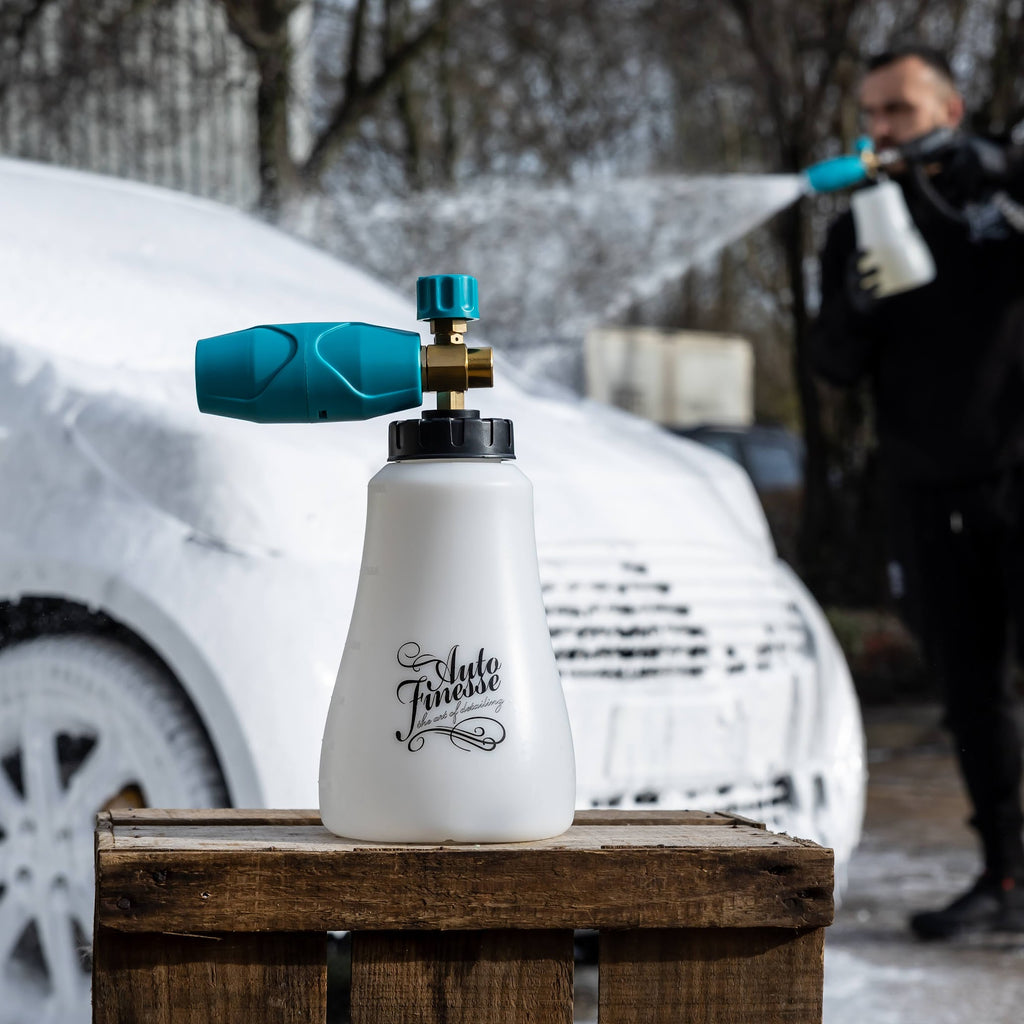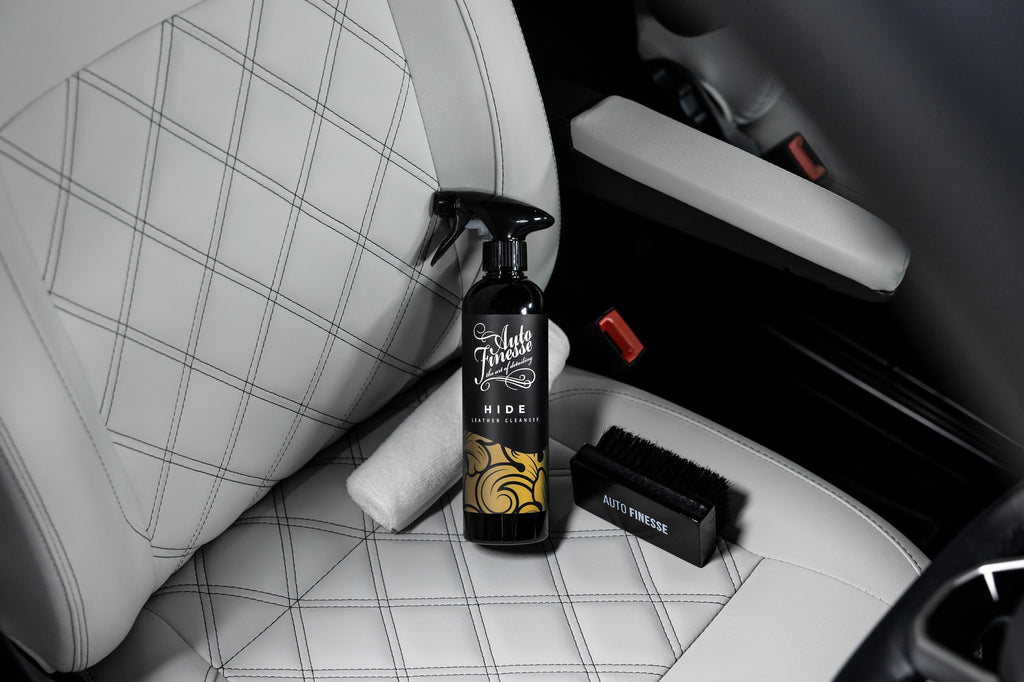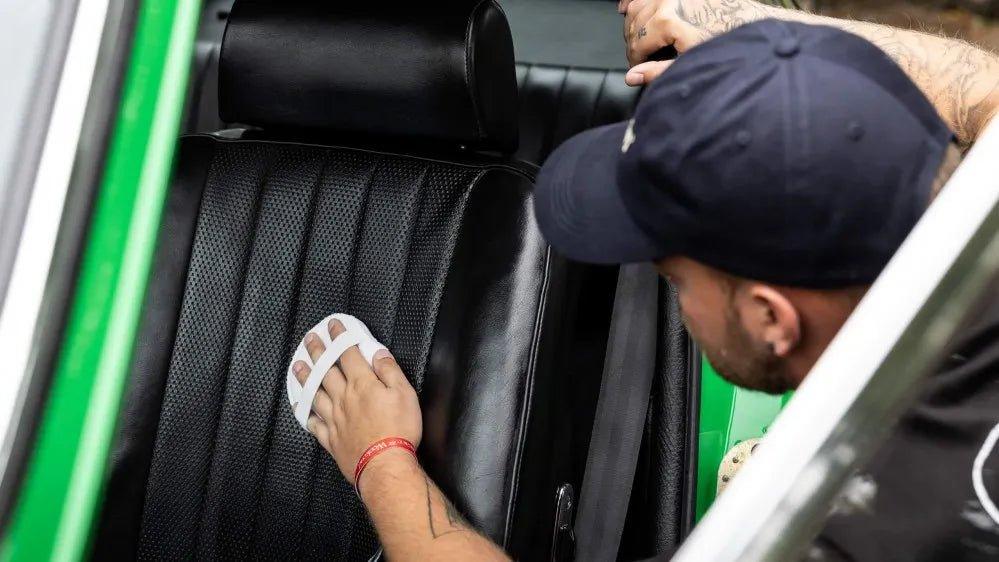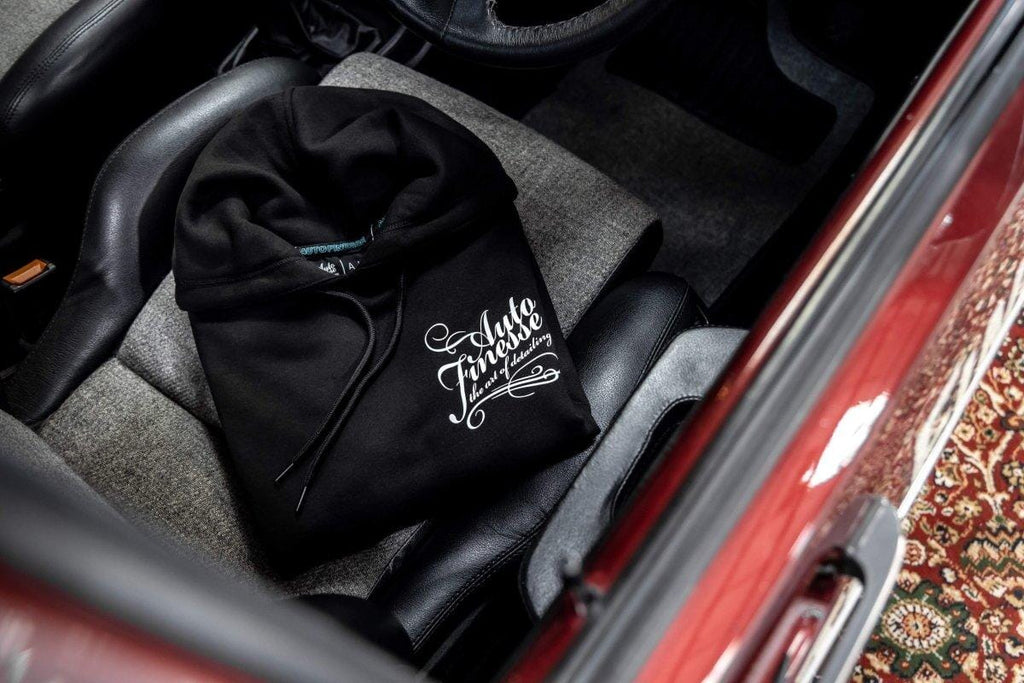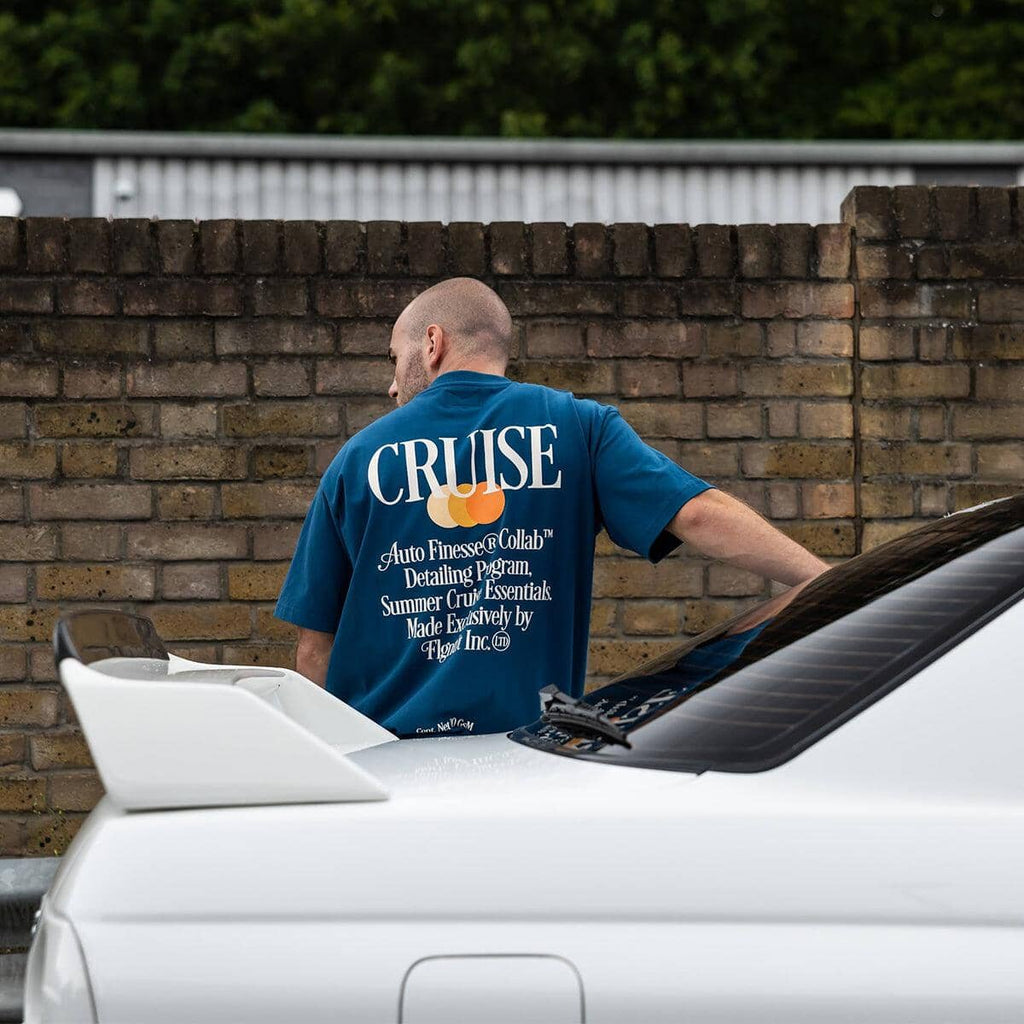What Microfibre Towel do I Need?

IN THIS FREE GUIDE:
- Learn about the differences in microfibre cloth construction.
- Discover how cloths work on a microscopic level.
- See how weight and weave can help you choose the best cloth for every task.

WHAT ARE THE BENEFITS?
- You can achieve the best results simply by choosing wisely.
- Knowing how to care for your cloths will always save cash.
- Learning the products to use with each cloth will make your detailing quicker and more effective.
Get The Right Cloth For The Job And Achieve The best Possible Results!
We all know that a microfibre cloth is not only a detailer's best friend, but an essential tool for just about every cleaning and finishing process. The question is though, how well do you know yours? Because, put simply, not all cloths are equal!
In fact, there are various types of microfibre towel, all with their own attributes to make them perfect for a variety of different tasks. So, with that in mind, for the very best results - whether that's with regards to cleaning, polishing or finishing - it's always better to have the cloth designed specifically for the job in hand. And, even more than that, getting the best quality cloths is essential so you don't inflict damage and to ensure they last for as long as possible, keeping the costs down along the way…

What Is Microfibre?
Although in detailing circles, we often use the word microfibre as a generalised term for a whole towel, it actually refers to each fibre. In order to be a microfibre, by definition, the single fibres have to be finer than 1 denier, which roughly equates to a single strand of silk. Most of the cloths we use in the automotive industry have microfibres between 0.1 and 0.3 denier, which is up to 200 times finer than a human hair. They're also made from a synthetic blend of polyester - which makes up most of the structure - and polyamide (Nylon) used for increased absorption and density. Blends are typically 70:30 or 80:20 respectively.
These single fibres are split to make them extremely fine during the manufacturing process and woven into various constructions, the most common being closed loop, waffle and twisted loop - these, along with short and deep pile constructions, all have different attributes making them perfect for specific tasks.

How Do Microfibre Cloths Clean and Dry a Car?
Aside from being used in conjunction with a wide range of detailing products, microfibre cloths have their own cleaning and drying abilities due to the split fibres, weight and the weave construction.
When you run a short pile, closed loop microfibre cloth (like our Work Cloths) over your hands for example, it can feel grabby. What's happening here has nothing to do with the softness or whether it will scratch your paintwork, it's simply the fine fibres working into, and holding onto imperfections in your skin, just imagine these fibres as being tiny little hooks. In much the same way these fibres will pick up and hold on to dirt and moisture, rather than simply push it around.
The attributes of the actual fibres themselves are also important. A split microfibre strand has a cross section much like an asterixis (*) or a multispoke wheel face (without the round lip), this not only means it has a hugely increased surface area, but that it can lift away fine particles within the strand itself. So, when these fibres are run across any wet or dry surface, they will pick up the fine particles (or water molecules) and hold them within the single fibres. This is the reason why dry dusting, say an LCD screen, is always more effective with microfibre, rather than a cotton cloth. Cotton fibres have a round cross section so, although they can trap some dirt between the fibres, the actual fibres themselves cannot trap the fine particles. This is why a microfibre cloth will hold onto dust, rather than simply move it around.
The second reason microfibre is so effective when dry dusting is even more scientific. During the splitting process, which is designed to make fibres finer, more absorbent and to give them a larger effective surface area, they are installed with a positive static charge. For this reason, they physically attract and hold onto negatively charged dust.

What Does GSM mean?
GSM, or grams per square metre, is the dry weight (the density) of any given microfibre cloth. The GSM figure is regardless of the type of weave or length of the pile, but as a general rule, the higher the GSM, the softer and more suited to absorbing moisture (or liquid detailing products) a cloth will be. When you look at our ultra-deep pile Aqua Deluxe Drying Towel, which are obviously designed purely for drying, they are a huge 1200GSM meaning they can absorb a huge amount of water. A high GSM is also suitable for sensitive surfaces like soft paint, our Ultra Plush Microfibre is also extremely absorbent, but this thick, plush, 800GSM cloth can be used effectively for buffing products and clearing residues, too.
Lower GSM figures are not quite as absorbent and more suited to heaver cleaning tasks. But, for automotive use at least, you won't want to delve below the 250GSM mark, our Work Cloths for example are still soft and durable, and come in at 300GSM making them seriously versatile for all manner of detailing tasks.
The last thing to consider about the density of cloths is how many washes they can withstand. Technically at least, a higher GSM means more durability with regards to goes around in the washing machine without degrading or fraying. But, that said it's all pretty negligible, all good quality cloths can last for years, up to around 500 washes in fact, if cared for correctly.

What Difference Does The Pattern Make?
The type of weave also has an impact on getting the best cloth for a particular task. Short pile, closed loop cloths tend to be best for deep cleaning and debris removal, using liquid cleaning products and the removal of polish, wax or coating residues. Dense deep-pile cloths tend to be softer and more absorbent making them great for use with quick detailers, for dry dusting sensitive surfaces, final buffing and soaking up water.
Twisted loop weaves, where ultra-deep pile fibres are bundled together, compacted and arranged in a long, twisted configuration are designed for the maximum possible surface area making them ideal for increased absorption. Our Silk Drying Towel is a great example of a devastatingly effective twisted loop design.
Waffle and Tweed weave patterns - like our Superior Waffle, Micro Tweed and Glass Waffle - also designed to have a huge surface area, making them ideal for soaking up spray products. But, although all microfibre is designed to lift and hold potentially harmful particles in the fibres (and away from surfaces), these types of weave also have the advantage that they have physical "pockets', between the weave, enabling them to store away larger pieces of debris when cleaning. These can also collect excess hard wax residue to prevent clogging and the risk of marring paintwork when buffing off.



How Do I Make My Microfibre Cloths Last Longer?
As we said, cloths that are well looked after can last for an extremely long time. Most good quality microfibre cloths can be machine or hand washed at a cool temperature. The key here is to ensure that the synthetic fibres don't melt and stick together, which will make them sharp, scratchy and unusable. This is why we keep temperatures under 30 degrees, and never iron or tumble dry towels on a high heat setting.
The only exceptions to the "washable and re-useable' rule we'd say is if your microfibre cloths have been used to buff off ceramic coating residue, used with solvent tar and glue removers, or those that are either extremely dirty, or have been accidentally dropped on the floor. In these cases, it's far better to throw towels away to prevent inflicting damage on your next detail, purely because it's almost impossible to rinse out the solvents/coatings and remove every particle of sharp grit and dirt.
Another thing that's almost impossible to rinse away fully is fabric softeners, these are designed to leave a coating on fabrics which actually stops the microfibres from doing their job. The reason why we never use these types of household products during washing.
And, as for using detergents? Well, firstly never use powdered detergents, because these can leave behind powder particles that are not fully broken down - these powder elements are sharp, and they will scratch sensitive surfaces. We recommend using Micro Wash, which is a liquid detergent specifically designed to break down grime and detailing product residues, all the while conditioning microfibre to make your cloths last longer. Using around 50ml of Micro Wash to hand wash, or machine wash on a low temperature (with a high spin to dry as much as possible), is the best method. After hanging your towels to air dry, they can be folded up and stored for the next detail.
The last thing to consider is separating your cloths to prevent cross contamination. In an ideal world you'd wash every towel separately according to the products used on them. But we understand this is rarely possible, so instead we'd recommend separating short and long pile cloths to wash separately. It also makes sense to wash your drying towels on their own, as they won't have come into contact with any cleaning products in the first place.

The Auto Finesse Microfibre Cloth Range
It goes without saying that we offer a suitable, machine washable microfibre for every job, so here's a rundown of the cloths we have developed to help you master all of your cleaning, polishing and finishing tasks…


Work Cloths
These 400x400mm cloths really are the master all-rounder of the range, and are able to perform a number of detailing processes effectively. Our short pile, 300GSM closed loop microfibre Work Cloths feature machine-stitched edges for extra durability making them ideal for use time and time again, even on the grubbier jobs.
We tend to use these as an all-round, multi-purpose tool, particularly in the cleaning and polishing phases. These are ideal for heavy duty cleaning tasks, like engine bays and interiors, polishing exhausts and for removing polish or ceramic coating residues. A Work Cloth and a bottle of Tripple All-in-One Polish can also be a powerful combo for cleaning and protecting hard-to reach areas like inside door jambs, engine bay parts, boot shuts and behind door handles.
We also offer these in a special a Work Cloth Trio pack, these are the same short pile, 300GSM construction, but offered in a selection of colours (teal, grey and white) making them handy for easy identification in your kit. Many detailers use dedicated cloths for different processes, so having different colours available can be useful.

Primo Plush
The perfect professional finisher, the Primo Plush is an extra-large, 600x400mm towel with a super-deep fluffy pile. The ultimate towel for final buffing this has extremely high absorbency making it ideal for use with Finale Quick Detailer and Glisten Spray Wax. Extremely soft 600GSM microfibre with a non-scratch micro-suede edging, the Primo Plush is suitable for all sensitive surfaces and can also be used for effective dry dusting, removing wax residues or mopping up water drips.

Ultra Plush
Super soft, and with an ultra-deep 800GSM pile, the 400x400mm Ultra Plush microfibre towel is not only and amazingly absorbent premium cloth that's ideal for tasks such as mopping up drips or drying intricate wheels and door shuts. But, it's also great for removing wax residue, final buffing spray waxes or soaking up detailing sprays. Like the Promo Plush, the Ultra Plush benefits from a non-scratch, micro-suede edging.

Micro Tweed
The Micro Tweed has been specifically designed for super-safe hard wax residue removal. This 400x400mm towel features soft short pile microfibre weaved into a special tweed pattern, meaning that residues can be lifted and stored away from paintwork when wiping. The Micro Tweed has also been designed for maximum durability through multiple uses and benefits from a tightly-stitched, non-scratch edging to prevent premature fraying. The ultimate wax removal cloth.

Superior Waffle
One of our specially designed waffle weave glass cleaning towels, the 600x400mm Superior Waffle is chiefly for use with glass cleaning sprays, like Crystal Glass Cleaner and Caramics Glass Cleaner. Soft and absorbent, the Superior Waffle is able to quickly mop up liquids while lifting away debris and storing it away from the surface in special recessed pockets. The ultimate towel for quick glass cleaning with a streak-free finish.

Glass Waffle
The Glass Waffle can also be used with spray glass cleaners, to add a little more bite to when more intensive cleaning is needed. But, where this one really comes into its own is with Vision Glass Polish, this being the ideal towel to work in the product and remove the residue. The 600x400mm Glass Waffle uses slightly stiffer microfibre than the Superior Waffle so, while it's still absorbent, it gives a little extra scrub for stain removal and restoring tired glass. Again, this glass cleaning cloth has a significantly increased surface area over traditional cloths, and will store polish residue and debris away from surfaces deep within the recesses.

Duo Edgeless
The 400GSM Duo Edgeless towel is the ideal dual-purpose microfibre. This one has a dense, short-pile surface that's ideal for wax and polish residue removal, while the other side features a plush, deep pile that's great for buffing or soaking up water drips and detailing sprays. Measuring 600x400mm, it's also an edgeless design for super-safe wiping and ease of use.

Aqua Deluxe
Our original drying towel, the Aqua Deluxe, is a seriously soft, 1200GSM plush towel capable of soaking up a huge amount of water. Designed purely for safe and effortless drying, the Aqua Deluxe features a super-absorbent inner core, non-scratch edging for increased durability and comes in a huge 500x700mm size. We also have the Aqua Deluxe XL, which is even bigger at a whopping 570x940mm.

Silk Drying Towel
This twisted-loop design is the ultimate for seriously fast drying, without abrading waxes and coatings. This design actually offers the most efficient absorption to safely tackle everything from paintwork and glass to wheels and trim. The extra-large, 920x620mm Silk Drying Towel can take on any car of any size, for the quickest in drying capability.
That's it for the detailing cloths, you can check them out in the Microfibre Cloths Collection!
Microfibre towels & cloths make all the difference when it comes to using detailing products to detail and valet your car. we all know that cloths are a detailer’s best friend...

